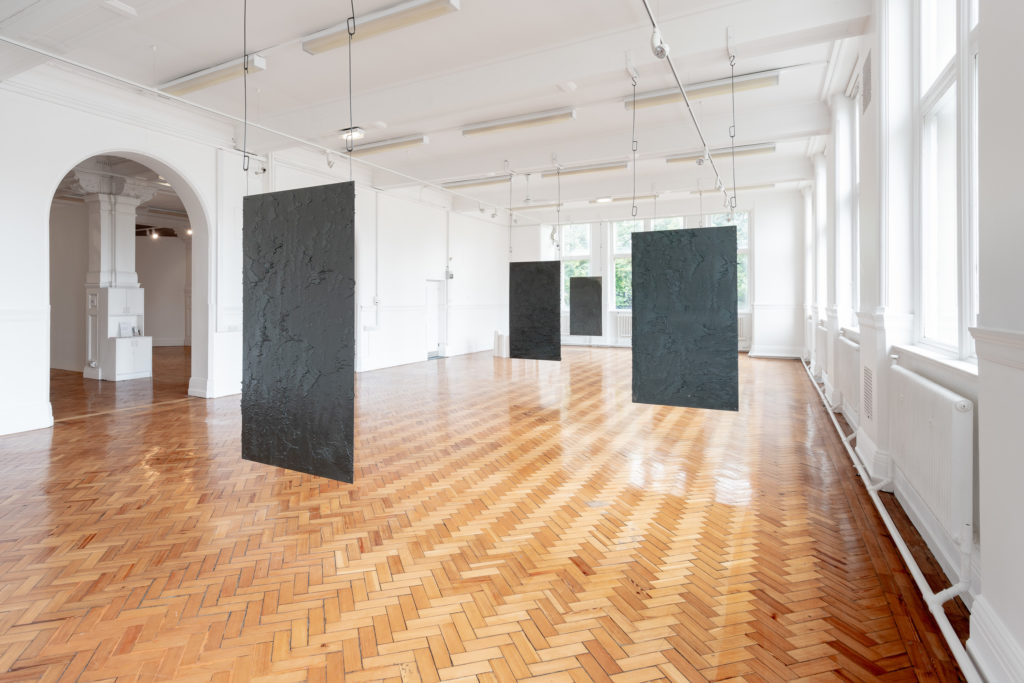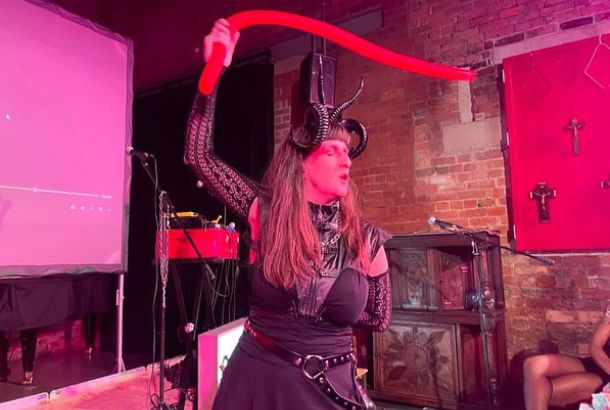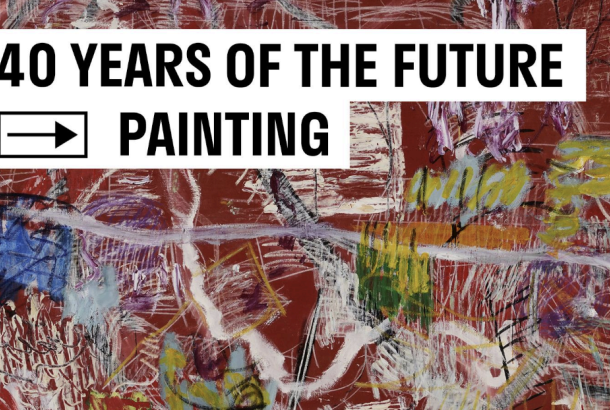
Nicola Ellis‘ workspace is not your typical artist’s studio.
For the last two years, she’s been ensconced in a factory that makes electrical enclosures, as artist-in-resident at Ritherdon & Co Ltd. Her forthcoming solo exhibition at Castlefield Gallery will seek to ‘bring the rhythms, sounds and material of manufacturing into the gallery space in unexpected ways.’
How did she end up spending her days making sculptures and paintings inside a working factory? Why is industrial ‘ecology’ an enduring fascination for her? And how does she hope to share that fascination with the rest of us? I recently caught up with her to find out.
“Not totally unfamiliar territory”
From an early age, Ellis was surrounded by makers. Her father worked in steel profiling, and most of her family in an industrial setting of some kind.
It seems only natural that when she caught the art bug in school, her practice had a materialist bent. Ellis mentions one inspirational art teacher who got them funding to blow up an old musical instrument and film it. It seemed, as she said, that “artists could do whatever they wanted. As if they had endless freedom.”

After studying Fine Art, Ellis found her father’s trade came in handy. When scrounging in scrapyards for junk metal, she could use it for her sculptures. Many of the materials she used were only loaned to her; she was expected to return them once the exhibition was over. This gave her sculptures a literal impermanence.
Did she ever feel sentimental about letting them go? “Not a bit!” To this day, she sees the artworks she makes from waste materials as just one stage of many in the material’s life cycle. Her ‘Dead Powder’ series, for instance, consists of metal sheets plastered with runoff powder paints leftover by the factory.
“Horrible, sweaty, hardcore”
Her introduction to Ritherdon – a family-run factory in Darwen, Lancashire – came with a 10-week residency back in 2018.
In situ, Ellis draws on a tradition of artists temporarily inhabiting industrial and government spaces. This began in the 1960s with the Artist Placement Group. The APG wanted to start conversations about the ‘value’ of the arts in society. Also, what an artistic perspective might reveal about these ‘functional’ places. She described her approach to being what some have termed an ‘incidental person’ as “constantly responding to a shifting environment, in the most planned way possible.”
At the risk of being blunt, I asked Ellis what interests her, as an artist. Specifically about the inner workings of a factory. Is it not a little bit…mundane?

She was quick to stress that her interest lies not in factories per se, but in Ritherdon – “a super-stimulating environment” – and the workers she interacts with. Her art is site-specific. What fascinates her seems to be the things that get taken for granted in a workplace. Mainly because they are so familiar. And the thing that is perhaps most taken for granted – in a factory as well as, one could argue, in society at large – is the skill of making things well, exercised daily.
Ellis’ “huge respect” for a hands-on job done well, over and over, relates to her working-class roots. She admitted that her passion has driven her into practices that might, to anyone else, seem “totally perverse”, such as her decision “to use weld as a material in itself.” This, she joked, was her manual version of 3D printing “before everyone else started doing it” – a painstakingly laboured process of building up an artefact from iterated lines of weld. It was a “horrible, sweaty and oppressive” job…but somebody had to do it!
Mission impossible?
On a personal level, her enthusiasm is infectious but her challenge is to translate her fascination with Ritherdon – which comes from being steeped in its atmosphere over several years – into a gallery where it can be appreciated and experienced by people who’ve never stepped foot inside the factory. She admits this “might be impossible”, but how does she intend to try?
She described an example from the Castlefield exhibition: a pair of strip-lights suspended from the ceiling, which will flash on and off in real-time synchronicity with workers using welding booths back at the factory. This is just one of the ways she tries “to humanise and celebrate” the masses of data the factory routinely collects to optimise its processes.

As our conversation drew to a close, I asked if she had some advice for new arts graduates. “This is the only one of your questions I made proper notes for!” she replied eagerly, while I tried not to feel too offended.
First, keep at it, every day (even if just for 30 minutes). Second, don’t be too satisfied with external opportunities, commissions, etc., but use these as platforms to make your own opportunities and set your own direction. Finally, “be self-critical all the time, in a super-logical way”, drawing on your non-artistic skills and experience to support your practise.
And what does the future hold for Ellis? For now, she is happy to stay put, and feels lucky to be a part of Ritherdon for the foreseeable future. But throughout her stay so far, what has caught her eye and imagination has continually changed, so one thing seems certain: it will not be business as usual.
‘Nicola Ellis and Ritherdon & Co Ltd: No gaps in the line’ will run at the Castlefield Gallery from 13 June until 1 August. Visitors can pre-book at the gallery website.







